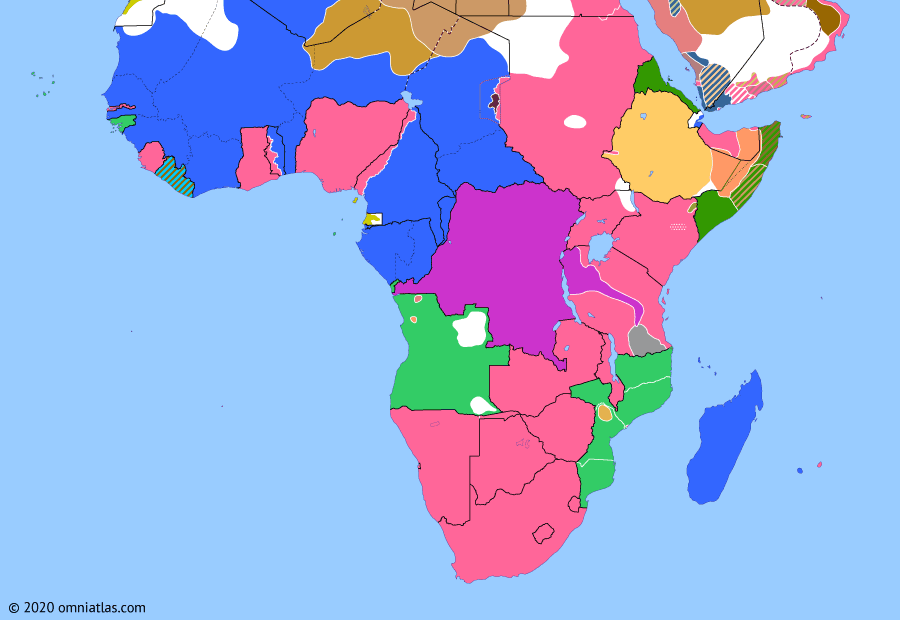Sub-Saharan Africa 1917: Conquest of German East Africa
15 October 1917
15 Oct 1917
Conquest of German East Africa
4 Aug 1914 Outbreak of the Great War
12 Sep 1914 Opening Shots in Africa
25 Oct 1914 Maritz Rebellion
4 Feb 1915 Early Victories of the Schutztruppe
22 Apr 1915 South West Africa Campaign
14 Nov 1915 Conquest of Kamerun
1 Mar 1916 Senussi and Darfur Campaigns
7 Aug 1916 East African Campaign
3 Jan 1917 Kaocen Revolt
15 Oct 1917 Conquest of German East Africa
2 Jul 1918 German invasion of Mozambique
11 Nov 1918 Armistice with Germany
By the beginning of 1917 the Allies had confined the German forces in East Africa to the bush country south of the Rufiji River. The British crossed the Rufiji in January but, plagued by supply problems and unable to match the generalship of the German commander Paul von Lettow-Vorbeck, took until November to complete the conquest.
